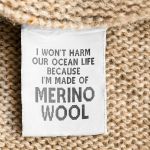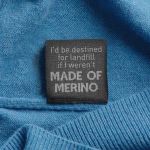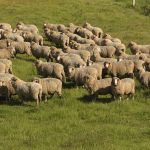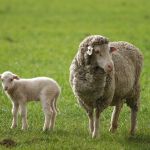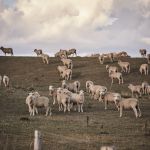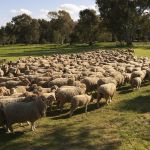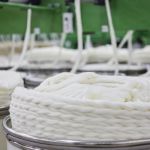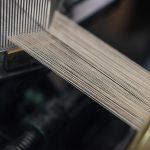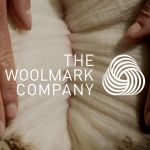
5 reasons why wool is the best choice for a sustainable wardrobe
How the world's oldest animal fiber could end up saving it
October 27th, 2021
Sustainability has become the main problem of the fashion industry. Since the beginning of the climate emergency, a gold rush has started to find new sustainable solutions – be it regenerative crops, new processing methods, upcycling and the circular economy. The latest goal of sustainable fashion, however, is materials: in a world where almost 2,700 liters of water are needed to produce a single cotton t-shirt, finding the next sustainable, recyclable and disposable material has become the top priority of research and development departments around the world. Yet a solution already exists – a natural, biodegradable, recyclable and naturally long-lived fabric: it is wool. Promoting wool as "the original eco-fibre" has always beenthe mission of The Woolmark Company, the association of over 60,000 farmers founded in 1936 in Australia to promote, study and defend the role of Merino wool. Over the decades, The Woolmark Company and its celebrated logo have become ubiquitous in closets and stores around the world – and it's to the historic nonprofit that we owe the research demonstrating Merino wool's abilities to prevent skin ailments or absorb odors, but also the studies that show that wool is actually the sustainable OG fabric.
To better explain the results of these studies, here are the 5 reasons why wool is the future of sustainable fashion.
1. Wool is completely biodegradable
All materials, whether natural or synthetic, have their own degree of biodegradability – which is measured with the speed that a substance takes to decompose by the action of external agents. Wool is a fiber composed entirely of keratin that, when it decomposes by microorganisms, not only does not pollute the soil but enriches it with nitrogen, carbon and sulfur. This does not mean that wool degrades easily – the decomposition of wool begins only when it is buried in moist soil, which also means that wool does not accumulate in landfills – even the anti-shrinking treatments to which it is subjected in its processing do not produce microplastics but in some cases accelerate the biodegradation process.
2. Wool production uses fewer resources than cotton
Wool processing, from shearing to industrial finishes, uses 18% less energy than polyester and 70% less than the water that is used for the production of cotton. In addition, the Woolmark Company has recently proposed a series of best practices to further minimize the impact that manufacturing processes have on the ecosystem: the use of organic dyes and dyeing processes with reduced use of water; anti-shrinking treatments that do not use chlorine and technologies for circular knitting and digital printing but also the recycling of wool itself and the creation of blends of wool and recycled synthetic fibers.
3. Wool is a circular fiber
Wool is a naturally renewable fibre as it is produced organically every year by sheep – 70 million specimens in Australia for the Merino breed alone. But the circularity of wool lies in its ability to be recycled: the first industrial process of recycling wool dates back to 1813, when Benjamin Law created a fabric called shoddy by mixing recycled and virgin wool. Today wool, thanks to its biochemical characteristics, is the most recycled fabric in the world. Recently, danish brand Really (partly owned by Kvadrat) used wool to create a type of solid felt to be used in furniture production as if it were wood while Emily Bode, whose eponymous Bode brand works almost exclusively with circular fabrics, became the winner of the Woolmark Price in 2020.
4. Wool does not produce microplastics
One of the most problematic and insidious aspects of synthetic fibers and materials is that they are polluting even when they are washed: microplastics used in synthetic garments represent 35% of all microplastics in the oceans. According to recent estimates, between 0.6 and 1.7 tons of microplastics end up in the sea every year – an amount that only increases. Natural fibers such as wool, linen and cotton do not produce microplastics and, in the case of wool, are also washed less – resulting in significant water savings throughout their life cycle.
5. Merino wool is traceable
Now that the production processes of almost every piece of clothing are fully industrialized, it has become increasingly difficult to trace the origin of materials: traceability is important because it demonstrates not only the origin of a material but also the places where it was processed – a whole process that takes place in different areas of the world and that sometimes reveals problematic aspects of the production of many brands. The Woolmark logo, for example, represents a certification of origin and therefore represents a form of traceability but obviously the intervention of the brands is needed to trace the entire production chain – a challenging decision that some brands are already implementing but that will still take some time. The Woolmark Company, in any case, encourages traceability and transparency even for initiatives such as the Woolmark Prize.

















































